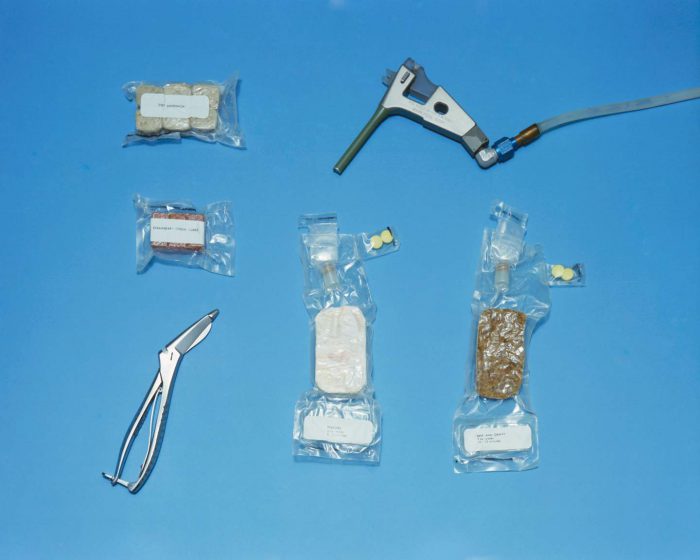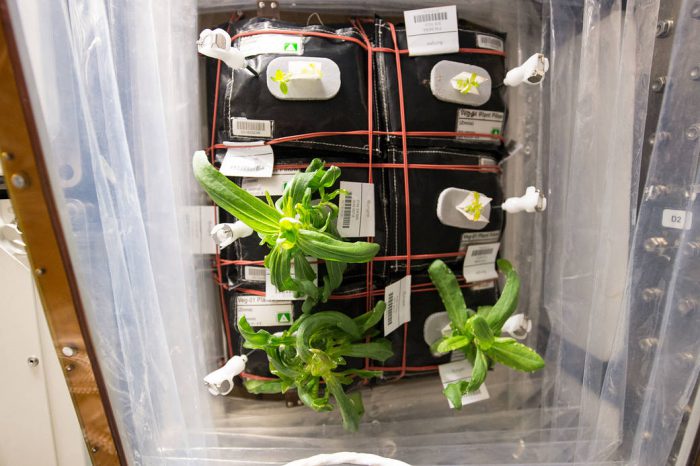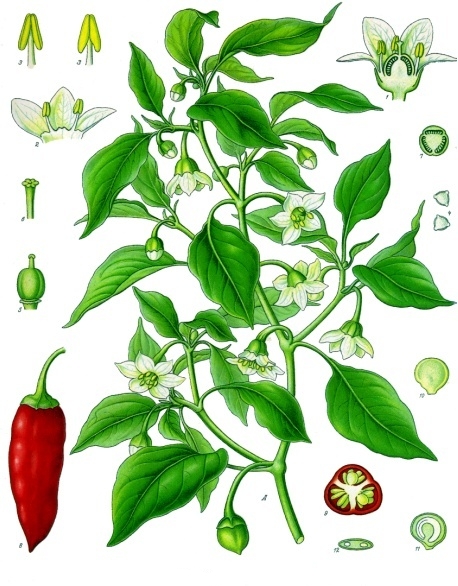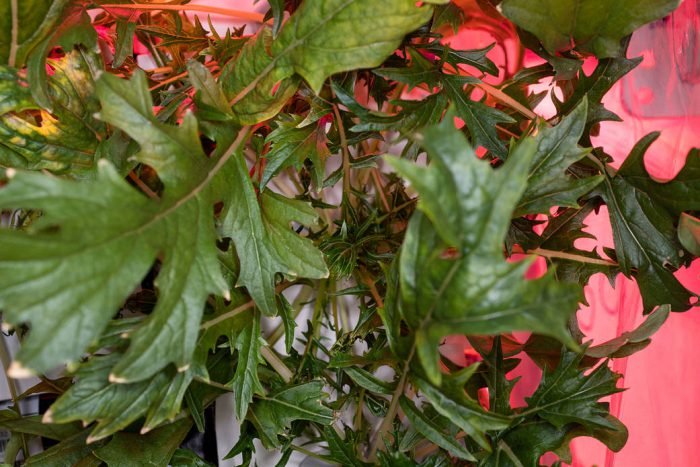One of the biggest challenges about living in space is eating well. Thankfully, the astro-menu has come a long way since the days of freeze-dried, vacuum-sealed beef stew.

A sample meal from the Gemini Space Program (1961–1966). It includes beef sandwich, strawberry cereal, peaches, and beef stew. (Smithsonian/NASA)
Uh... who's hungry?
Today, astronauts can make burritos, cookies, and even sometimes receive a shipment of fresh fruit! But one of the biggest breakthroughs? Growing their own food in space.
Since 2015, NASA has had an ISS garden. The edible plants grown there have included cabbages, leafy greens, Swiss chard, and lettuce. And now? Plans have been announced to grow the first fruit in orbit. If that news sounds sweet, well, it is. Just not quite how you're thinking.
Because they will be growing Española chili peppers!
Eat your VEGGIEs

Zinnia flowers being grown on the ISS in 2015. (NASA)
How will they do this? Meet VEGGIE. This device provides the light, moisture, and nutrients that plants require to grow. The root system of each plant is contained within a "pillow". For the last four years, astronauts have been using it to learn what it takes to garden in space.
In the picture above, the ISS garden was growing Zinnia flowers in late 2015. After a lot of trial and error, the astronauts were eventually able to make them bloom, too. See?
How does your garden grow? Here's how my #spaceflower came to bloom: https://t.co/DbmTqqJopf #YearInSpace pic.twitter.com/kl1bxI96PJ
— Scott Kelly (@StationCDRKelly) January 16, 2016
Next step
Blooming flowers was a big step. By understanding how to grow flowering plants in microgravity, the door was opened to other flowering plants. Yummy ones, such as tomatoes. And... peppers!

A standard chili pepper plant, aka Capsicum annuum. (Wikimedia Commons)
These Española peppers are set to begin their life in space this November. These peppers have been chosen because they don't grow very tall, are easy to pollinate, mature quickly, and can survive at high altitudes. (Because if there's one thing that ISS is, it is high altitude!) Chili peppers are also a source of vitamin C, too, which astronauts could always use more of.
So if everything goes according to plant, er, plan, the astronauts could ring in one spicy new year.
Good luck, space peppers!
 American astronauts on ISS began growing their own food, such as these leafy greens, in 2015. Russians have grown peas in space since 2003! (NASA)
American astronauts on ISS began growing their own food, such as these leafy greens, in 2015. Russians have grown peas in space since 2003! (NASA)









